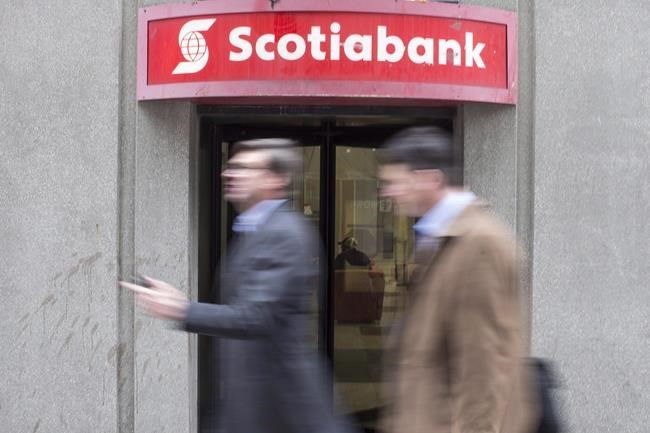TORONTO — BMO and Scotiabank both reported higher loan growth and profits in the last quarter from a year ago and said commercial and consumer demand remains strong despite growing worries about the economy.
The two banks, the first to report results for the second quarter that ran until the end of April, say that while their results were robust, they have also ramped up their internal stress-testing scenarios as central banks raise interest rates to combat inflation.
"Given the macroeconomic environment, we run stress tests that would have more harsh inputs today than we would have possibly a year ago," said Scotiabank chief executive Brian Porter on an earnings call Wednesday.
The rising interest rate environment is increasing worries that central banks may overstep and push the economy into a recession, but the banks say they have seen few signs of such a case emerging so far.
Many businesses are still investing to bridge supply chain gaps, on-shore more production, and boost productivity, said David Casper, who leads North American commercial banking at BMO.
"There's certainly more uncertainty given some of the continued issues that we all know about, supply chain, inflation, but the demand for our clients' products still is outstripping supply. So they're still growing, they're trying to keep up."
BMO reported overall loan growth of nine per cent for the quarter from a year ago, with slightly better gains in commercial, while Scotiabank reported a 13 per cent gain, boosted in part by a 16 per cent gain in 91Ô´´ mortgages.Â
The activity helped push up net income at BMO's 91Ô´´ personal and commercial division by 21 per cent, while Scotiabank reported a 27 per cent jump in its 91Ô´´ division.
Rising mortgage rates have focused attention on the heavy debt loads carried by 91Ô´´ households, but the banks say that their lending book remains strong as consumer financial health has overall improved during the pandemic.
"We're very confident in the health of the 91Ô´´ consumer at this point," said Scotiabank chief risk officer Phil Thomas.
The bank did however note that the 91Ô´´ housing market has already started to slow as rates start to climb, and isn't expecting the same level of mortgage activity for the rest of the year.
"You have seen some slowing in the mortgage growth ... there are some markets, which have, obviously, grown more in the buyers' favour, let's say, based on softening," said Dan Rees, Scotiabank's head of 91Ô´´ banking.
He said that the bank is down about 2.5 per cent in mortgage growth from the prior quarter, but still expects to see year over year growth for the remaining quarters to be in the high single digits.
Banks are also not immune from inflationary pressures, with Scotiabank's expenses ticking up three per cent from a year earlier, including an eight per cent jump in expenses in the 91Ô´´ division, and BMO reporting adjusted expenses up two per cent including an 11 per cent jump in Canada as both invest in technology and rising salaries.
Both banks say they expect to keep expense growth in the low single digits, but BMO revised up its estimate to 2.5 per cent for the year, up from 1.5 per cent.Â
And banks are set to benefit from the rising rates meant to combat inflation, with both reporting slightly higher net interest rate margins compared with the prior quarter.
The rising rates have put a big dent in stock market valuations and trading activity, which helped to push net income at BMO's capital markets division down 20 per cent from a year earlier, while Scotiabank reported income at its global banking and markets division was down six per cent from a year earlier.
The pullback in markets however was more than offset by gains in other divisions, with BMO reported an adjusted net income, which excludes earnings related to its pending Bank of the West, of $2.19 billion, up from $2.58 billion the same quarter a year earlier.
Scotiabank reported a net income of $2.75 billion, up from $2.46 billion in the same quarter last year.
BMO said it will now pay a quarterly dividend of $1.39 per share, up six cents from $1.33 per share, while Scotiabank increased its quarterly dividend three cents to $1.03 per share.
Meny Grauman, an analyst at Scotiabank, said in a note that while results from the quarter are by their very nature backward looking, it was encouraging not to see signs of a slowdown in BMO's earnings.
"The good news from these results is that there is no sign of recession anywhere in the numbers."Â
This report by The 91Ô´´ Press was first published May 25, 2022.
Companies in this story: (TSX:BNS; TSX:BMO)
Ian Bickis, The 91Ô´´ Press



